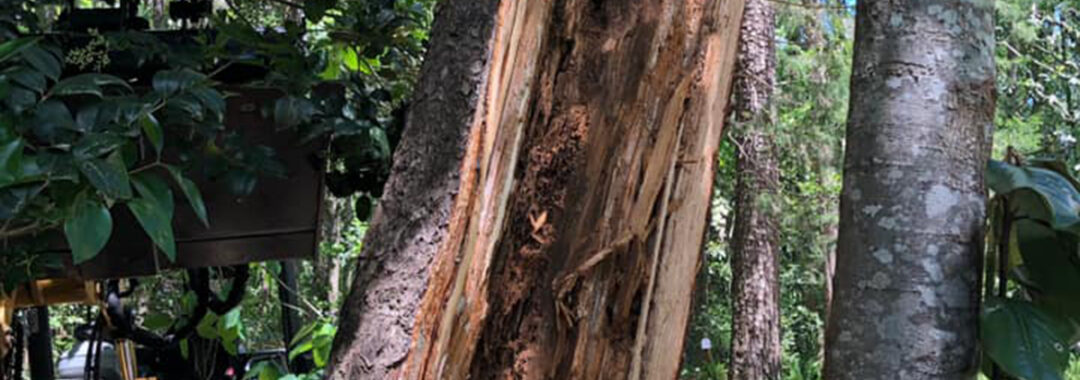Discovering signs of pests feeding on your trees is one of the most frustrating things for a tree owner, especially if you cannot identify the culprits. How often have you stood before a damaged tree and wondered, “What’s eating my tree?”
When you don’t call in a professional Fort Walton Beach tree service contractor for immediate pest control, you can end up with defoliated trees.
New Leaf Arboriculture is Crestview’s premier tree care service company. Our team of certified arborists can provide timely assistance to identify and control pest species attacking your trees. We want our Florida clients to enjoy a beautiful and welcoming landscape’s primary benefit of healthy trees.
Identifying What’s Eating Your Trees
What’s eating my tree? It could be a few things.
Foliage Feeders
Foliage feeders are pests that feed mainly on leaves. Depending on the species, you can find signs of foliage feeders along leaf margins or on the laminae. In severe infestations, trees can lose most of their leaves.
Common foliage feeder species in Florida include Gypsy moths, bagworms, and Eastern tent moths.
Sap-Sucking Insects
Sap-sucking insects have modified mouthparts called stylets that pierce leaves and allow them to suck the internal sap. The feeding site typically turns yellowish.
Another sign of sap-sucking insects is the presence of honeydew droplets on leaves. Honeydew is a combination of water and unprocessed sugars.
Common sap-sucking insect species in Florida include aphids and red spider mites. These insects are general feeders, meaning they can attack all species of trees.
Trunk and Bark Borers
Trunk and bark borers chew the woody part of your trees. Depending on the species, they feed on the pulp or lay eggs in the holes. Most trunk and bark borers require a host tree to complete their life cycle.
Florida’s most common insect pests that attack tree trunks include the emerald ash borer, bark beetles, and the Southern pine beetle.
Root Feeders
Detecting root feeders can be challenging because they live underground. Additionally, the signs of root feeders, such as stunted leaf growth and yellowing leaves, are similar to nutrient deficiencies. Typically, only a trained professional arborist or entomologist can correctly identify signs of root feeders.
They usually attack certain plant species. For example, conifer root aphids attack conifers, while white grubs attack fir trees.
Wildlife
While insect pests are the most common source of tree damage, the local wildlife in Florida can also contribute to tree defoliation. Small animals like birds and rodents can feed on bark, fruits, and foliage or use organic tree material to build nests.
In rural areas, large wildlife such as elk and deer can also graze on foliage if the leaves are at a manageable height.
Get Professional Tree Care Services from New Leaf Arboriculture
Now that you have an answer to the question, “What’s eating my tree?” the next step is finding a reliable tree care service. New Leaf Arboriculture has an expert team of arborists ready to tackle your problem.
We provide year-round tree service. If you want to learn why leaves turn yellow in the summer or find out what’s eating your trees, call 850-603-1411.
